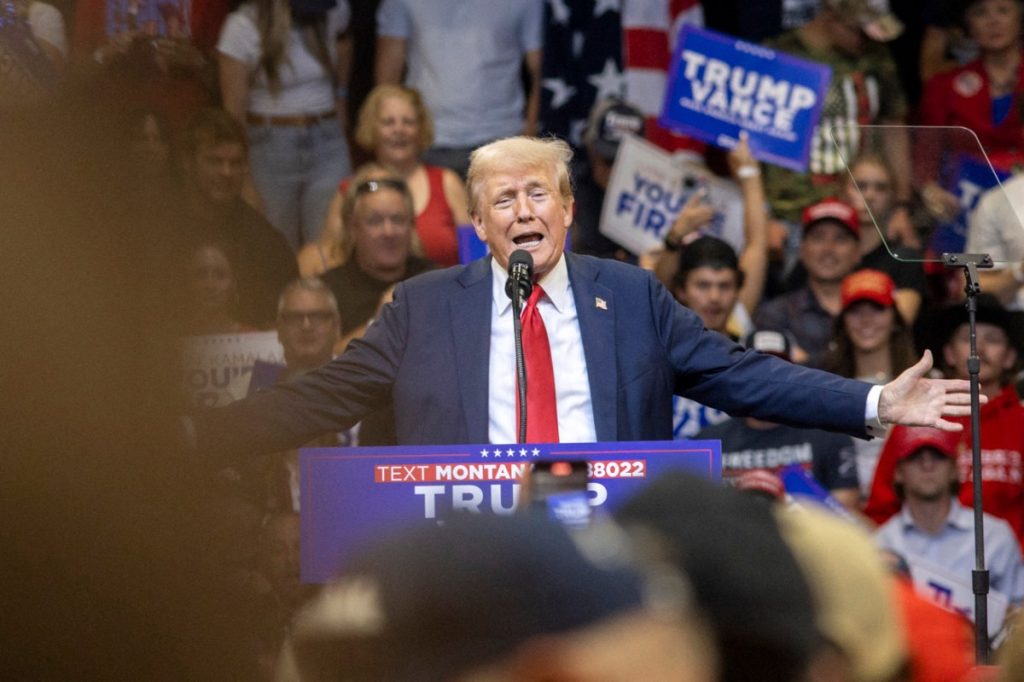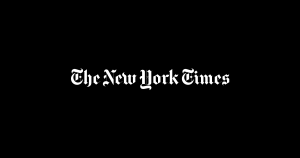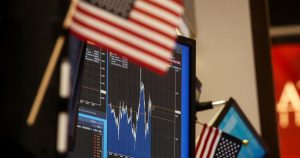Last week, President Trump tasked his economic team with devising plans for “reciprocal tariffs” on every country taxing US imports. Designed in part as bargaining leverage with other countries, they are ramping up prospects for a global trade war with both American allies and adversaries. As Trump put it, “I will charge a reciprocal tariff, meaning whatever countries charge the United States of America, we will charge them. No more, no less.”
Since Trump did not impose new tariffs yet, Wall Street sighed in relief. Though the prime financiers of the Trump campaign, U.S. financial institutions are increasingly concerned that the administration’s new tariffs are broadening trade war, penalizing consumer and business confidence and risking accelerated inflation in America.
The financial institutions should be concerned. The only reason that Trump did not impose fresh tariffs was that he initiated investigations that could ignite a far worse global trade war toward the late spring.
Trump’s tariff war with the world
The US deficits first emerged in the early 1970s; decades before offshoring, the rise of China and other large emerging economies. Since the mid-2000s, China and the large emerging economies have driven global growth prospects. In the process, U.S. goods and services deficit has soared to $918 billion in 2024, up $134 billion from the previous year.
Today, the world factory is not in the US, but in China. The US doesn’t benefit from trade surplus; it suffers from a huge deficit. Similarly, in the past eight decades, US dollar’s share of global payments has halved to less than 50% of the total. Thanks to the past Trump and Biden administrations, US trade deficit has more than doubled from $40 billion per month to about $90-$100 billion monthly.
US Balance of Trade, 1950-2025 ($bn)


Source: Tradingeconomics, author
On February 1, President Trump imposed 25% tariffs and 10% duties on energy products on Canada and Mexico, and 10% tariffs on China. The three countries are America’s greatest trade partners and the US has a trade deficit with each. Together with Germany and Japan, these five countries account for more than half of all US imports. They and all the rest will be next in the firing line.
US Imports by Country


Source: COMTRADE, Tradingeconomics, author
This week Trump suggested 25% tariffs on autos, pharma and semiconductors, which could “go very substantially higher over a course of a year.”
A (very) broad definition of reciprocal tariffs
Starting with countries with the biggest trade surpluses and highest tariff rates first, the aim is to offset not just tariffs but also non-tariff measures, including vehicle safety rules.
The same goes for value-added taxes (VAT), even though VATs are faced by both US and other international companies in different countries. VATs create no advantage for European firms and no disadvantage for US firms because they are neutral with respect to trade.
Thanks to the new tariffs and non-tariff measures the Trump administration is also on a collision course with its major allies, the European Union and Japan.
The idea is also to go after what the Trump administration deems as “burdensome” regulations, harmful “government subsidies” and flawed exchange rate policies.
In the Trump world, all these measures erect unwarranted costs and barriers to US products in foreign markets.
The Commerce Department and the US trade representative are expected to prepare their plans to achieve “reciprocal trading status” by April 1 – perhaps appropriately on April Fools’ Day.
Penalizing emerging and developing economies
Should this trade war materialize, it could prove far costlier to the emerging and developing economies, and it might push several fragile economies over the edge. Ironically, export-led growth, the development doctrine that fueled the rise of many East and Southeast countries, could now hit the wall.
In the postwar decades, the so-called Asian tigers – Singapore, Hong Kong, Taiwan and South Korea – were lucky enough to industrialize during increasing global integration. The more they still rely on export-led growth and a US trade surplus, the more they will find themselves in tricky waters with the Trump White House.
The successors of these countries – particularly the large emerging economies and many of the BRICS, including China, India, Brazil, Indonesia, Mexico – that rely on international trade and US trade surpluses would also have to reassess their growth models. Things are likely to get even more heated with those countries that trade oil and gas or other commodities in local currencies.
Reiterating his longstanding threat, Trump said last week that US “if [the BRICS] want to play games with the dollar” and “if any trading gets through, it’ll be 100% tariff, at least.” However, big trading economies like China, which have diversified economies and can divert their trade into the Global South, will be better insulated from US economic coercion.
If the expansive BRICS can unite their forces, their collective leverage will prove formidable, even vis-à-vis the US and other G7 economies. By the early 2020s. China alone used its currency to settle half of its foreign trade and investment transactions.
Renminbi Usage in Cross-Border Payments


Source: Hector Perez-Saiz, Longmei Zhang (2023) RMB share in Swift payments with China
Source: Hector Perez-Saiz, Longmei Zhang (2023)
Overall, the emerging world will face elevated uncertainty surrounding US trade policy that can defer investment decisions and impact emerging economies linked to countries targeted by US tariffs.
Undermining the WTO
In a short order, Trump has tried to decimate the US aid agency (USAID), withdraw the US from the UN refugee relief agency in the Middle East (UNRWA) and the World Health Organization (WHO), while sanctioning the International Criminal Court (ICC). If completed, reciprocal tariffs would increase duties on many trading partners, while violating decades of normative trade policies by the World Trade Organization (WTO).
Trump’s attacks against the WTO began in the first term, when he put the global trade body into sleep by blocking judges from its top dispute-settlement panel. Instead of correcting the wrong, the Biden administration continued it. Now the Trump administration is eager to destabilize the WTO’s principle of “most favored nation” (MFN) status.
The MFN requires member nations to ensure equal tariff and regulatory treatment to other members unless they have free-trade agreements in place. The idea of applying different tariff rates to different countries violates the WTO principle of non-discrimination among its members. As Trump’s elevated tariff rates exceed the maximum rate negotiated with other WTO members, trading rules are violated.
Expressing the views of many WTO members, China condemned these “tariff shocks” that could upend the global trading system.
Ironically, Trump is purposely undermining the “rules-based trading world” that US claims to have fostered since the 1950s. Effectively, Trump’s reciprocal tariffs would mean a fatal rupture from the WTO. It could effectively endanger the very role of the trading body, the US role in the organization and the world’s trading system itself – for the first time in 75 years.
Positioning for talks with China
With an eye on his legacy, Trump wants a “deal of a century” in China. He knows it needs to be a deal that can benefit both the US and China. His neoconservative hawks – Secretary of State Marco Rubio, national security adviser Mike Waltz and Sinophobe trade counselor Peter Navarro – will oppose any Chinese investment in the US.
Yet, it is advisers like Commerce Secretary Howard Lutnick, Treasury Secretary Scott Bessent; and tech billionaire Elon Musk who he will listen.
In the Middle East and Ukraine, Trump has used his special convoy Steve Witkoff to get things done (and override neocon mutinies). With China, he could do the same.
But this time around, Chinese policy authorities are more wary. Trump’s interest in a “deal of a century” with China is an opportunity. But he is seen as a risk amplifier. The stakes are too high for policy mistakes.
Author’s note: This is an abbreviated version of the commentary published by China-US Focus on Feb 21, 2025








